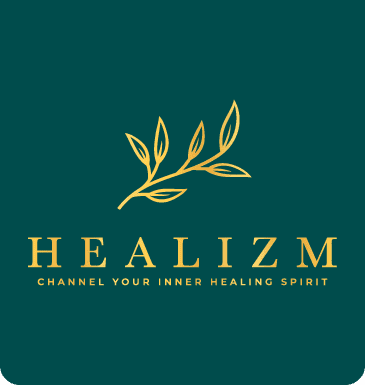
Introduction to Health Inspections
Health inspections protect people’s safety and well-being in diverse locales, from restaurants and food service facilities to healthcare facilities and public spaces.
Regulatory agencies conduct these inspections to assess health and safety standards compliance, identify potential hazards, and mitigate risks.
Hence, the question is: what is a point of focus during health inspections?
One important aspect of health inspections is the point of focus, which refers to specific areas or practices that receive special attention during the inspection process.
In this post, we will explore the concept of the point of focus during health inspections.
We will explore the key areas it encompasses, discuss the benefits of addressing it, provide strategies for improvement, and explore the role of technology in enhancing inspection processes.
What is the Point of Focus During Health Inspections?
Understanding the importance of the point of focus and addressing it effectively is essential for maintaining high hygiene standards, preventing foodborne illnesses, and promoting overall public health.
Key Areas of Point of Focus in Health Inspections
1. Food Safety and Handling
Food safety and handling practices are at the top of the list when it comes to the point of focus during health inspections.
2Inspectors carefully assess how food is received, stored, prepared, cooked, and served to ensure proper hygiene, temperature control, and prevention of cross-contamination.
2. Sanitation and Hygiene Practices
Cleanliness is next to deliciousness, or so they say. Inspectors pay close attention to the sanitation and hygiene practices in food establishments.
The inspection includes evaluating the cleanliness of the locality, equipment, utensils, and even the personal hygiene of employees.
Managing a sterile and hygienic environment is paramount in eliminating the spread of harmful bacteria and viruses.
3. Equipment Maintenance and Calibration
Properly functioning equipment is essential for maintaining food safety standards.
Inspectors take note of the maintenance and calibration of equipment used in food preparation and storage.
From thermometers to cooling units, ensuring equipment is in good working order helps prevent temperature abuse and the growth of harmful pathogens.
4. Employee Training and Certification
Knowledge is power, especially when it comes to food safety. Inspectors evaluate whether employees have received adequate training in food handling, sanitation, and safety protocols.
They also check if any necessary certifications are up to date.
Benefits of Addressing Point of Focus in Health Inspections
1. Improved Public Health and Safety
When health inspections focus on specific areas of concern, such as food handling practices or sanitation standards, it directly contributes to improved public health and safety.
By identifying and addressing potential hazards or violations; establishments can prevent the spread of foodborne illnesses and keep a clean and safe environment for their customers.
2. Better Customer Satisfaction
Addressing the point of focus during health inspections also leads to enhanced customer satisfaction.
Customers are likelier to trust and patronize establishments prioritizing their health and safety.
When customers feel confident in a facility’s cleanliness and overall quality, they are more likely to have a positive experience, recommend the place to others, and become repeat customers.
3. Legal and Regulatory Compliance
Health inspections serve as a way to ensure legal and regulatory compliance for establishments in the food and service industry.
By addressing the point of focus, businesses can bypass forfeitures, penalties, or even closure due to non-compliance.
Staying on top of health inspections and making the necessary improvements helps establishments meet the standards set by regulatory bodies and maintain a good reputation within the industry.
Conclusion and Best Practices for Point of Focus in Health Inspections
In conclusion, the point of focus is a critical aspect of health inspections that demands attention and proactive measures from establishments.
By understanding the importance of the point of focus and addressing it effectively, businesses can ensure compliance with health and safety standards, protect public health, and enhance customer satisfaction.
Regular training, establishment of standard operating procedures, and advanced technology can significantly improve the point of focus during inspections.
By prioritizing these best practices, establishments can create a safe and healthy atmosphere for all stakeholders.
Ultimately, a strong commitment to maintaining high hygiene and safety standards will not only result in successful health inspections but also safeguard the well-being of individuals and promote a positive reputation in the industry.
FAQs
-
What is the point of focus in health inspections?
The point of focus in health inspections refers to specific areas or practices that receive heightened attention during the inspection process. These areas are crucial for maintaining hygiene, preventing foodborne illnesses, and ensuring public health and safety. They can include food safety and handling, sanitation and hygiene practices, equipment maintenance and calibration, and employee training and certification.
-
Why is addressing the point of focus important during health inspections?
Addressing the point of focus is vital during health inspections because it helps establishments maintain compliance with health and safety standards. Moreover, addressing the point of focus enhances public health, promotes customer satisfaction, and helps establishments avoid legal and regulatory issues.
-
How can establishments improve the point of focus during health inspections?
Establishments can improve the point of focus during health inspections by implementing various strategies. These include establishing standard operating procedures, conducting regular training and education for staff, implementing effective monitoring systems, and utilizing advanced technology for inspections and data analysis. By following these best practices, establishments can enhance their overall performance and create a safer and healthier environment.
